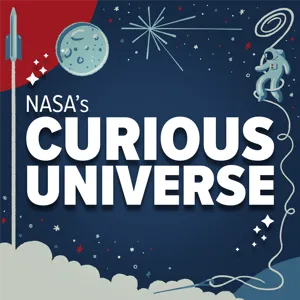Podcast Summary
Exploring Earth: NASA's Role in Studying Our Home Planet: NASA investigates Earth's systems through satellite data, tracking changes in ice caps, forests, and atmospheric conditions to understand our planet's functions and evolution.
NASA is not only dedicated to exploring the mysteries of outer space, but also deeply invested in studying and monitoring Earth, our home planet. Through various methods, including satellite data, NASA's Earth scientists work to understand and track changes in Earth's systems, from melting polar ice caps and shrinking forests to natural disturbances and atmospheric changes. These discoveries are crucial for understanding how our planet functions and how it's evolving over time. As we celebrate the 50th anniversary of Earth Day, it's a reminder of the importance of preserving and protecting our planet, and NASA continues to play a vital role in that mission.
Measuring Earth from Space: NASA gathers data on Earth's atmosphere, oceans, ice, and vegetation from space to monitor wildfires, track pollution, and study plant cycles. The Orbiting Carbon Observatory 3 on the ISS is an example of this.
NASA's measurements from space play a crucial role in understanding our planet's complex systems and predicting future patterns. NASA scientists use instruments to gather data on our atmosphere, oceans, ice cover, and vegetation, allowing them to study Earth as a whole. This global perspective enables them to monitor wildfires, track air pollution, and even detect changes in forests and plant life cycles. NASA's Orbiting Carbon Observatory 3, installed on the International Space Station, is an example of how these measurements can be used to understand the sources and impacts of carbon dioxide and other pollutants. These insights not only help us address tangible environmental issues but also inform future research and decision-making.
Understanding Earth's climate and its impact: NASA uses data on carbon dioxide flow, ecosystem studies, remote sensing, and long-term satellite observations to predict future climate conditions and protect our planet.
NASA scientists are working diligently both in space and on the ground to better understand our Earth's climate and its impact on the natural world. By collecting data on carbon dioxide flow, studying various ecosystems, and utilizing remote sensing, they aim to predict future climate conditions and protect our planet. NASA's long-term satellite observations provide valuable insights into our planet's changes, dating back to the 1970s and 1980s. This data not only helps us understand the present but also allows us to look back in time, giving us a more comprehensive view of our home's transformation. Ultimately, this knowledge empowers us to make informed decisions and take action to preserve our planet for future generations.
Revolutionizing our understanding of the planet with satellite data: Satellite data from Earth observation helps in real-time decision making and long-term research, essential for farmers, disaster responders, and scientists. It provides valuable context for current changes and aids in immediate response.
Earth observation data from satellites has revolutionized our understanding of the planet, providing valuable information for real-time decision-making and long-term research. From mapping the ice caps to monitoring wildfires, this data is essential for farmers, disaster responders, and scientists alike. The long-term data record helps contextualize current changes, while real-time observations aid in immediate response. Despite the emotional and practical challenges posed by natural disasters and environmental changes, the optimistic perspective remains that we can learn from these events and work towards improvement. The engagement and awareness of individuals in addressing climate and air pollution issues are crucial steps towards a sustainable future.
Appreciating the Wonders of Earth through NASA's Exploration: NASA's exploration and research remind us of Earth's wonders and importance, emphasized by iconic images like Earthrise, while Earth Day encourages us to celebrate and care for our planet's diverse life and perfect conditions.
Our planet, Earth, is a unique and precious place deserving of our collective care and attention. NASA, with its ongoing research and exploration, serves as a reminder of the wonders of our world and the importance of understanding it better. The iconic Earthrise image taken during the Apollo 8 mission underscores this idea, emphasizing the unity of all life on Earth. As we celebrate Earth Day, let us remember the awe-inspiring diversity of life and the perfect conditions that make Earth our home. The future holds endless possibilities for learning and discovery, and it's exciting to imagine what we'll uncover about our planet and the universe as a whole.






